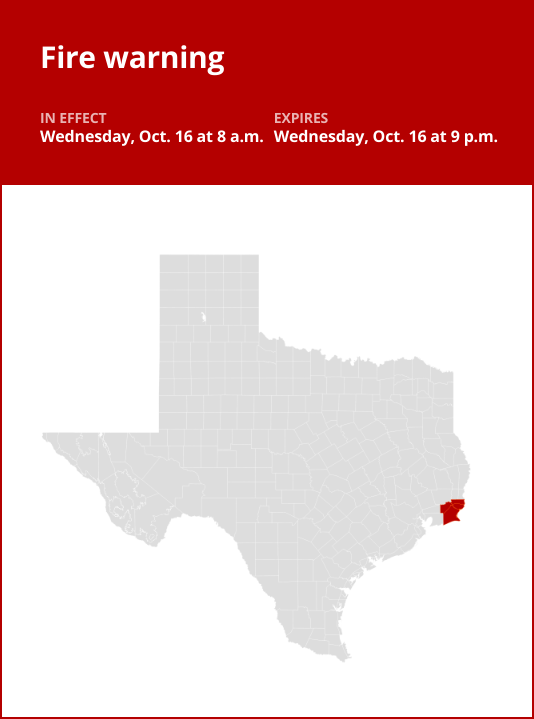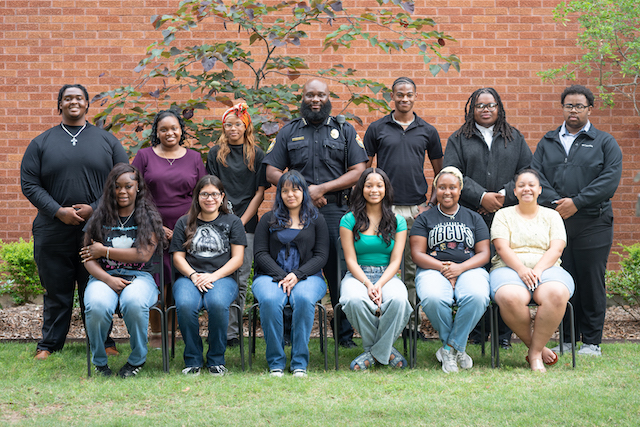Fire warning for Southeast Texas for Wednesday
Published 2:18 pm Tuesday, October 15, 2024
On Tuesday at 2:15 p.m. the National Weather Service issued a red flag warning valid for Wednesday between 8 a.m. and 9 p.m. The warning is for Upper St. Martin, Lower St. Martin, West Cameron, East Cameron, Northern Calcasieu, Northern Jefferson Davis, Northern Acadia, Upper Vermilion, Upper Iberia, Upper St. Mary, Southern Calcasieu, Southern Jefferson Davis, Southern Acadia, Lower Vermilion, Lower Iberia and Lower St. Mary as well as Vernon, Rapides, Avoyelles, Beauregard, Allen, Evangeline, St. Landry, Lafayette, Jefferson and Orange counties.
Extreme grassland fire danger is forecast. Winds are forecasted to be 20 foot winds near 20 mph with gusts to 25 to 30 mph and humidity decreasing to between 20 and 30 percent by Wednesday morning, then lingering through Wednesday afternoon.
“A passing cold front will bring low RH values along with strong north winds. Very dry conditions continue with KBDI values above 600 across the region,” says the NWS. “Any fires that develop will likely spread rapidly. Outdoor burning is not recommended.”

What does a red flag warning mean?
A red flag warning means that extreme fire weather conditions are either occurring now or will shortly, according to the NWS. Warm temperatures, very low humidities, and stronger winds are expected to combine to produce an increased risk of fire spreading rapidly.
So, what are the recommended measures to take during a red flag warning?
A red flag warning demands vigilance and immediate readiness to respond to potential fires. The NWS provides these vital guidelines to minimize fire hazards and ensure your safety:
1. Bolster burn barrel safety:
- If burning is permitted in your area, ensure that all burn barrels have a weighted metal cover, complete with holes no larger than 3/4 of an inch.
2. Mindful handling of smoking materials:
- Never discard lit cigarette butts outside, and avoid tossing cigarettes or matches from a moving vehicle. These seemingly small actions can lead to dry grass ignition, potentially sparking a wildfire.
3. Properly extinguish outdoor fires:
- To safeguard against accidental fires, diligently extinguish all outdoor fires. Drown them with an ample amount of water and stir to confirm that everything is cold to the touch. Submerge charcoal in water until it’s thoroughly cooled. Never dispose of live charcoal on the ground.
4. Never desert a blaze:
- Avoid leaving any fire unattended. Even sparks or embers carried by the wind can ignite nearby leaves or grass, triggering a fire that spreads rapidly.
Understanding the gravity of a red flag warning and adhering to these precautions is pivotal in reducing the risk of wildfires during these hazardous conditions. Prioritize safety, stay informed, and act responsibly to protect lives and property.
Source: The National Weather Service






